There are two main ways to go with garden-safe sealants (and stains) for raised garden beds or planters.
The first option is to use a non-toxic water-based sealer/stain on the exterior with a safe water-based painted-on membrane on the interior of the box. (The water-based sealers/stains used on the exterior won’t hold up inside the bed).
The second option is the most food-safe option, which is to use a totally natural penetrating oil on the inside and outside of the garden bed or container garden.
All of the options here are non-toxic and plant-safe, leaving your garden produce safe to eat.
Some of these are only wood stains/sealants and some can be used on concrete and plastic planter boxes as well.
This article contains affiliate links, upon purchase I make a small commission at no extra cost to you.
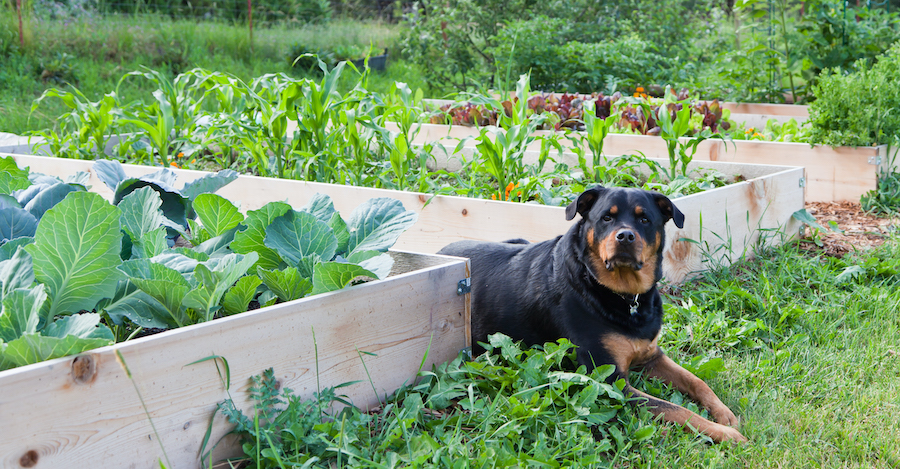
1. Non-Toxic Stain & Sealant
Vermont Natural Coatings PolyWhey is a stain and sealant for the exterior of raised garden beds.

This is one of the most durable water-based (non-toxic) wood stain/sealers out there. This is a semi-transparent stain and sealer in one. It is a waterproofer that has some UV resistance (you get more UV resistance the darker you go with the stain color).
It can be used on new wood, pressure-treated wood, and weathered wood. Pressure-treated wood needs 6 months to a year to fully dry before this (or any) sealant is applied. It’s not for use on tropical super dense woods.
It could be applied over older oil-based stains or finishes, as well as water-based finishes if it’s been fully sanded first so that it can penetrate into the wood. No product can go over top of this in exterior applications.
This sealant is non-toxic, low odor, and low-VOC, and does not contain biocides, fungicides, or anti-microbial agents. The pigments act as natural UV inhibitors.
This coating is great for the exterior of raised garden beds with AFM Dynoseal for waterproofing on the interior.
You can buy PolyWhey online at Walmart and Amazon.
2. Non-Toxic Invisible Waterproofer
Vermont Natural Coatings Penetrating Waterproofer with Juniper is an invisible-looking option for the exterior of raised planters.

This is another water-based sealant. This is a penetrating sealer that does not form a film on the surface; therefore it leaves the wood looking totally bare after applying it.
This sealant provides waterproofing but it does not provide any UV or abrasion resistance. The wood will gray out naturally from UV exposure.
It is used on the exterior of planters, and like all water-based sealants and paints, it is not suitable for subterranean or submerged wood.
For the inside of the planter, you will need a product that can resist moisture and prevent rotting – use AFM Dynoseal for this purpose.
It can be used on new wood, weathered wood, as well as pressure-treated wood. For pressure-treated wood allow 6-12 months for drying out before applying this sealant. It can work on teak and other oily woods and it is a good choice for cedar, pine, spruce, and fir.
It cannot go over or under another product.
It is zero-VOC and contains no solvents, dyes, biocides, or fungicides.
You can buy Penetrating Sealer From Walmart and Amazon.
3. Non-Toxic Waterproofer for Inside the Beds
AFM DynoSeal is a non-toxic water-proofing membrane for the interior of garden beds.
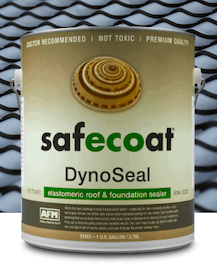
For the interior of the bed, the most durable non-toxic coating is AFM SafeCoat DynoSeal.
You paint it on and when it’s dry it acts as a waterproofing membrane that prevents moisture intrusion from the soil into the wood (preventing rot) and it stops tannins or chemical treatments in the wood from leaching into the soil and getting to the plant’s roots.
You can use this on the inside of planters made of wood, plastic, or concrete. It’s not for use on the outside of the planters, it doesn’t hold up to UV light and doesn’t look great either.
The partial ingredient list is: Acrylic Copolymer Emulsion and Pigment Dispersion. It’s listed at 19 g/l VOCs.
On the exterior, you can use PolyWhey, Penetrating Sealer with Juniper (listed above), or tung oil, linseed oil, or paint (listed below).
Buy DynoSeal from Green Design Center.
Note: Another water-based option that works inside the planter is Garden-Seal. (There aren’t many non-toxic water-based options that will work under soil). It’s a 0-VOC formula that some users say smells like Elmer’s Glue (which is PVA). Although no ingredients are listed on their site or the SDS, it has great reviews and I have used (and liked) their Cedar-Seal product.
4. All-Natural Tung Oil Sealant
Outdoor Defense Oil is an all-natural tung, pine, and zinc mix that can be used for the interior and exterior of planters.
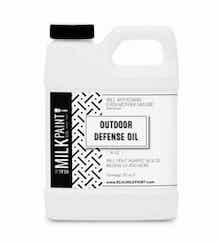
Pure tung oil is an all-natural product. The brand I use contains no synthetic, metallic, or other harmful additives.
It is non-toxic, and safe to use on organic garden structures that have contact with food supplies – including raised garden beds, chicken coops, and greenhouses.
Tung oil is very durable for a natural oil. It’s by far the most durable of the natural penetrating oils which is why it can be used on the inside as well as the outside of the garden bed (wood or concrete). It seals moisture out of wood, helping to preserve it, and its elastic properties help it hold up to movement and temperature changes. It’s very durable to mold.
Outdoor Defense Oil is an all-natural oil sealer made from pure tung oil, pine oil, and zinc.
You can also use this over Milk Paint to protect it from the elements or you can mix (some types of) pigments into the tung oil. Milk Paint should be used only on the exterior of the planter.
You can use this on concrete and on all wood types. Extremely dense woods such as teak and ipe, etc may require thinning with more (natural) solvent. Because tung oil needs to penetrate the wood it does not go over new oil-based sealers/stains or other finishes. You can use it over aged penetrating oil finishes (like aged linseed oil).
Some highly chemically sensitive folks have preferred these natural oil coatings to synthetic coatings like PolyWhey (others would find the opposite preferable).
Always test for your own tolerance and I would recommend not using or being exposed to the natural solvents used with tung oil (pine oil or citrus oil) when they are wet if you are sensitive.
Buy it through the Real Milk Company. You can use code mychemicalfreehouse for 10% off.
PS. To clean tung oiled wood, you can use gentle soaps, but some non-toxic cleaners can damage it – this post goes over the best options.
5. Linseed Oil Stain & Sealant
Rubio Monocoat linseed-based stain & sealer can be used on the exterior of planters.
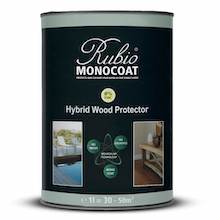
Rubio Monocoat Hybrid Wood Protector is a modified linseed oil and wax penetrating oil finish that is applied with just one coat.
This product is for the exterior of the planter, it provides protection from water and UV (except for the color “Pure” which has no UV protection).
It works well over almost all wood types including oily tropical woods (ipe, teak, etc).
It is solvent-free, technically zero-VOC because it’s a natural product. (Though see my in-depth review of Rubio Monocoat and other linseed oils for information on naturally occurring VOCs).
Rubio Monocoat is preferred to plain linseed oil in many ways because it’s lower in odor than the other brands. You need a part B accelerator, be sure to test that out as well.
You can buy it directly through their website.
Note: Another natural oil-based sealer is Seal It Green Garden Box Sealer-Plant Based. The main drawback for me here is that they don’t actually list out the ingredients. They list the contents as: tree nut oils (this usually means tung or walnut oil); soy/corn derived carrier (this could just mean soy or corn oils or it could mean soy solvent); coconut-derived surfactants (maybe methyl ester sulfonates or similar); plant-based preservative (usually the preservative for penetrating oils are minerals or metals, I would want to know what it is for sure because it’s in contact with food).
6. Non-Toxic Paints
AFM or ECOS non-toxic paints can be used on the exterior of raised garden beds.
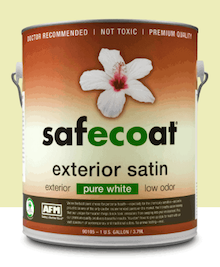
If you have older planters start by sanding off any rough areas or peeling paint and then prime the surface with AFM SafeCoat Transitional Primer. Next, paint the surface with AFM Safecoat Exterior Satin Paint.
Painting ultimately gives you the best protection against UV damage and other natural elements.
If you go with the painted option, you can’t use any penetrating sealant or oil-based stain and sealer over or under the painted surface.
If you prefer ECOS Paint brand you can use their exterior paints and primers.
Buy AFM paints via Green Design Center, ECOS Paints via their website.
What I wouldn’t use:
- “Teak oil” – any mix that contains tung and/or linseed with unknown ingredients or metallic driers would not be safe on the interior side next to the growing food.
- Linseed oil on the interior of the planter beds/container garden. It’s just not durable enough to hold up in here. Also, linseed oil with driers would not be safe on the inside of the planter.
- Hemp oil or walnut oil – while you can use these two other penetrating drying oils on the exterior side they are not nearly as durable as linseed or tung oil. I would not be keen to use these outdoors.
- Jojoba oil – this is not a drying oil, it’s not a good finish for exterior wood.
- Milk Paint without a super durable topcoat is not going to hold up outside.
- Thompson’s Water Seal cannot be used on the interior of the box under dirt, they said in an email. You can use it on the exterior, but for me, this option is too high in VOCs.
Conclusion, Top Picks:
Water-Based Options:
On the inside of the planter: Waterproof it with AFM DynoSeal
Outside (clear or stain look): Vermont PolyWhey
Outside (invisible natural wood look): Vermont Juniper
Outside (painted look): AFM or ECOS Paints
All-Natural Oil Options
On the inside of the planter: Tung oil with zinc
Outside (no stain): Tung oil with zinc
Outside (with stain colors): Rubio Monocoat
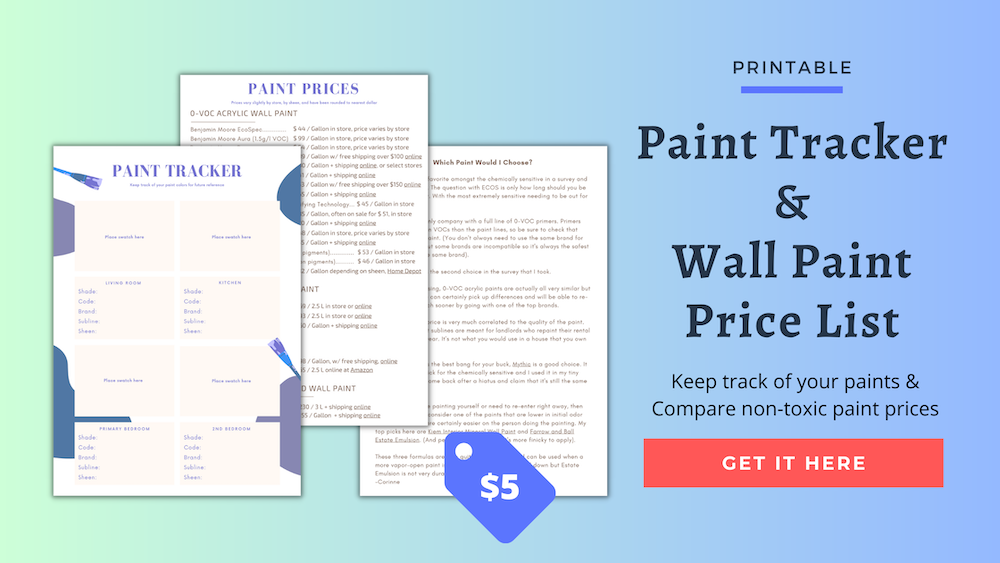
Corinne Segura holds certificates in Building Biology, Healthier Materials and Sustainable Buildings, and more. She has 10 years of experience helping others create healthy homes.
If you would like to support the research behind this blog you can make a donation via Kofi!

Steve
I am new to this site and don’t know a lot about wood or other material toxicity as it relates to contact with vegetables, etc. Is a treatment required on the inside of any untreated wood to prevent leaching of toxins (natural wood tannins, etc.?) or is it only to prolong the life of the wood as it touches dirt, water, etc.? I was thinking of using cedar but would it have to be treated to be safe?
Also, what do you think about other materials like steel? Are certain types (galvanized, etc.) safe or would/could they be treated to make them safe?
Corinne
The wood is not toxic itself, only if its reclaimed wood (and could be treated with something). The Tung Oil and other sealers are to prolong the life of the wood. Metal is also safe.
Sylvia
What do you think about Birdies garden beds? From what I e read they won’t leach anything da dangerous, but would love your opinion.
https://birdiesgardenproducts.com/shop/8-in-1-original-raised-garden-bed/
Corinne
looks fine
Sri
After using a sealant on the interior of an Elevated Raised Bed Planter, do we need to use the liner material that may be supplied with the set? Its usually made of plastic or something similar, and I am wondering if that would be safe ?
Corinne
With these sealers you don’t have to use a liner, however there are wood reasons to use some liners that don’t have to do with protecting the wood so that will be up to you.
Chris
Thanks for all the great info. I am wondering what effect zinc would have if it were to leach out into the soil of a raised garden bed? I understand the benefit of including it in the product, but I am concerned about using it for the inside of the garden beds. Do you have any more info on this topic?
Wanda
As always, you save the day with your wealth of knowledge. This is very helpful. I need to use a silicone caulking for a raised garden bed, but I don’t see any mention, You list Silicone RTV 4500 Sealer on your website as acceptable. Is it allowable for an organic raised garden bed?
Corinne
That one is food grade.
Mary
I use Garden-Seal.
Corinne
Do you work for the company? I see you added their website under your details.
Jennie Hanzlik
Have you heard of a product called Eco Wood Treatment? It is supposed to be completely nontoxic and suitable for rasied garden beds.
Corinne
There is no indication as to what it is at all so I personally would not use it. There are some bad reviews on amazon within the questions. Some people think it might be copper and or ferrous sulfate. It doesn’t sound durable enough to me but I haven’t used it.
Ashley Cossé
Hi Corrine,
Do you have any post on outdoor furniture? Most of the patio sets are made of PE wicker. Does this type of material off gas? Also many of the cushions are made with harmful chemicals to make them weather resistant. Any guidance would be appreciated!
Thank you,
Ashley
J
Lifetime wood stain (Valhalco) is also excellent for inside and outside of boxes.. Only problem is that the price in the US has gone way up since the pandemic probably due to shipping costs from Canada.
Carissa
Great info, thank you! Just had a garden built (24×9) and wanted to darken the wood structure. I found this Gardener’s Exterior Wood Stain. It says it’s whey based. Is it safe for in and outside of the beds, where the dirt is coming in contact with food? Many thanks!